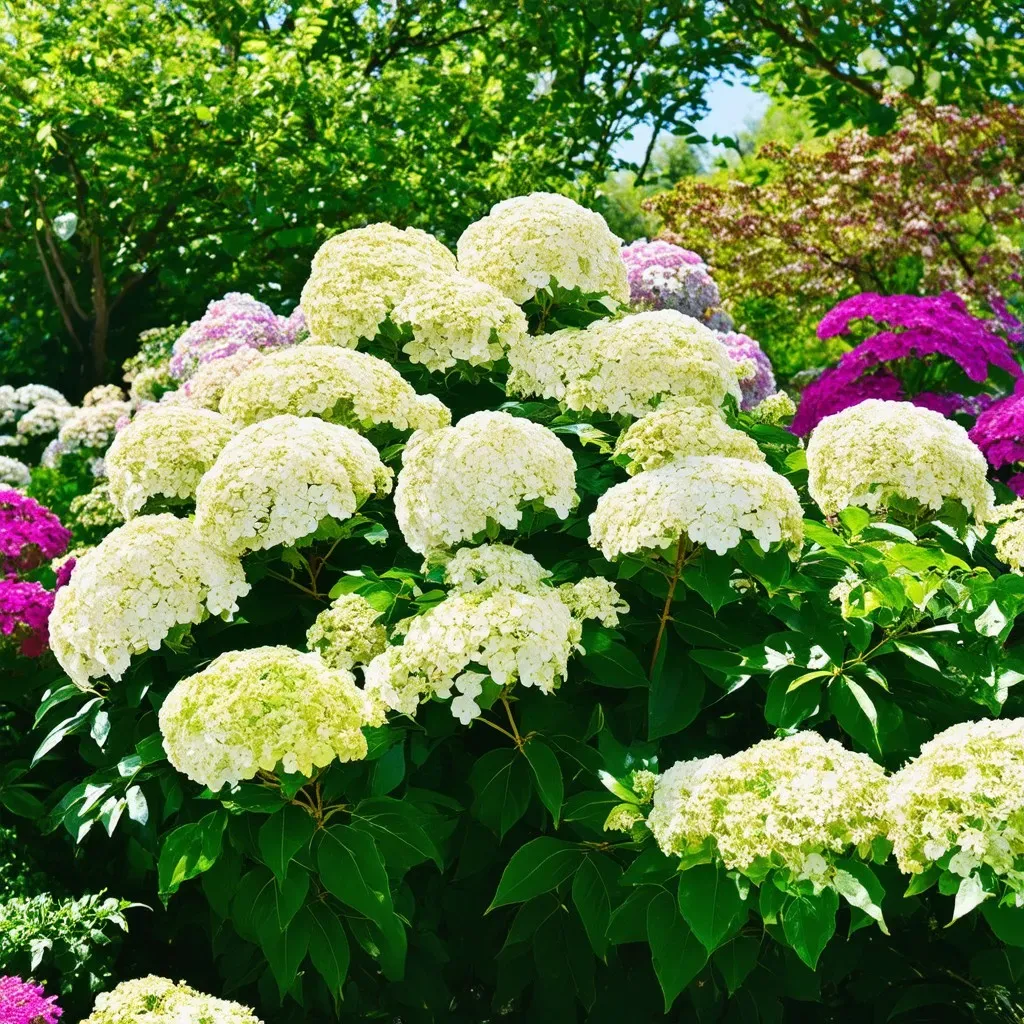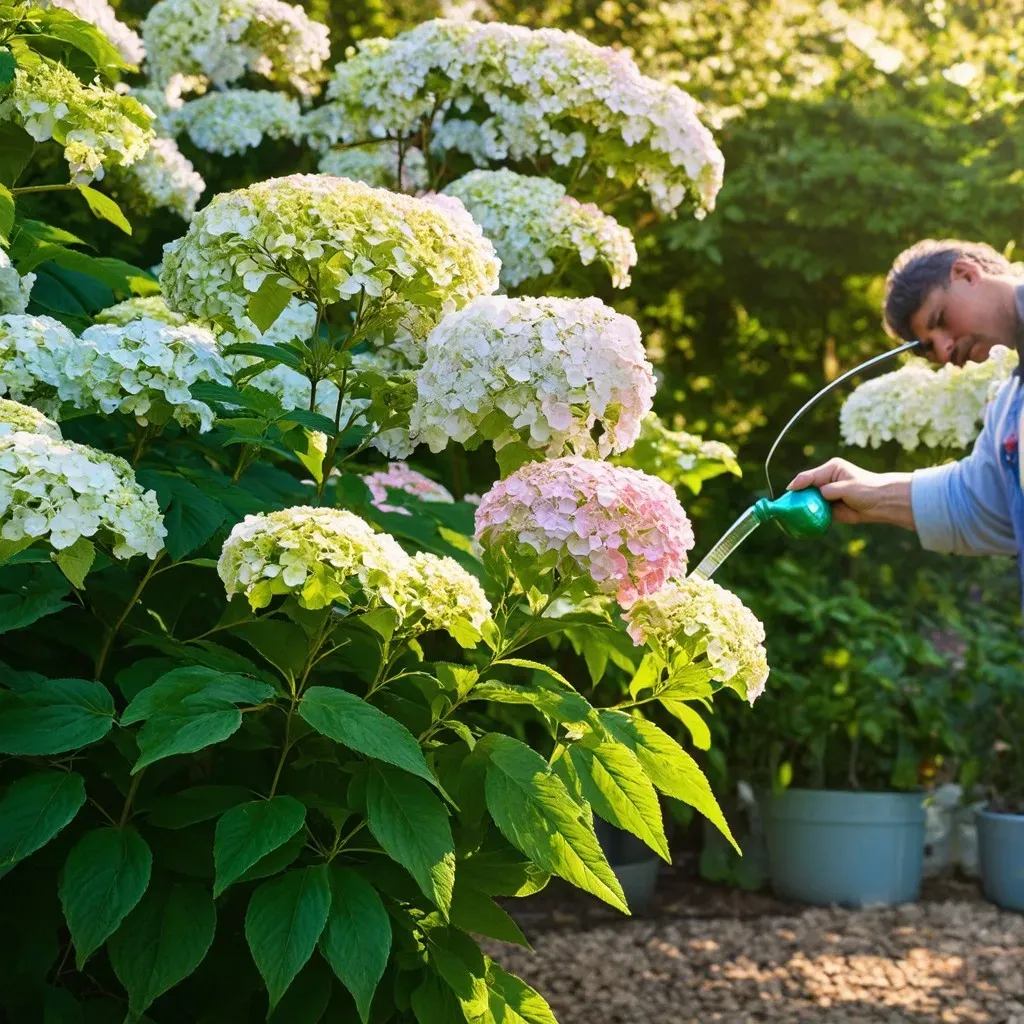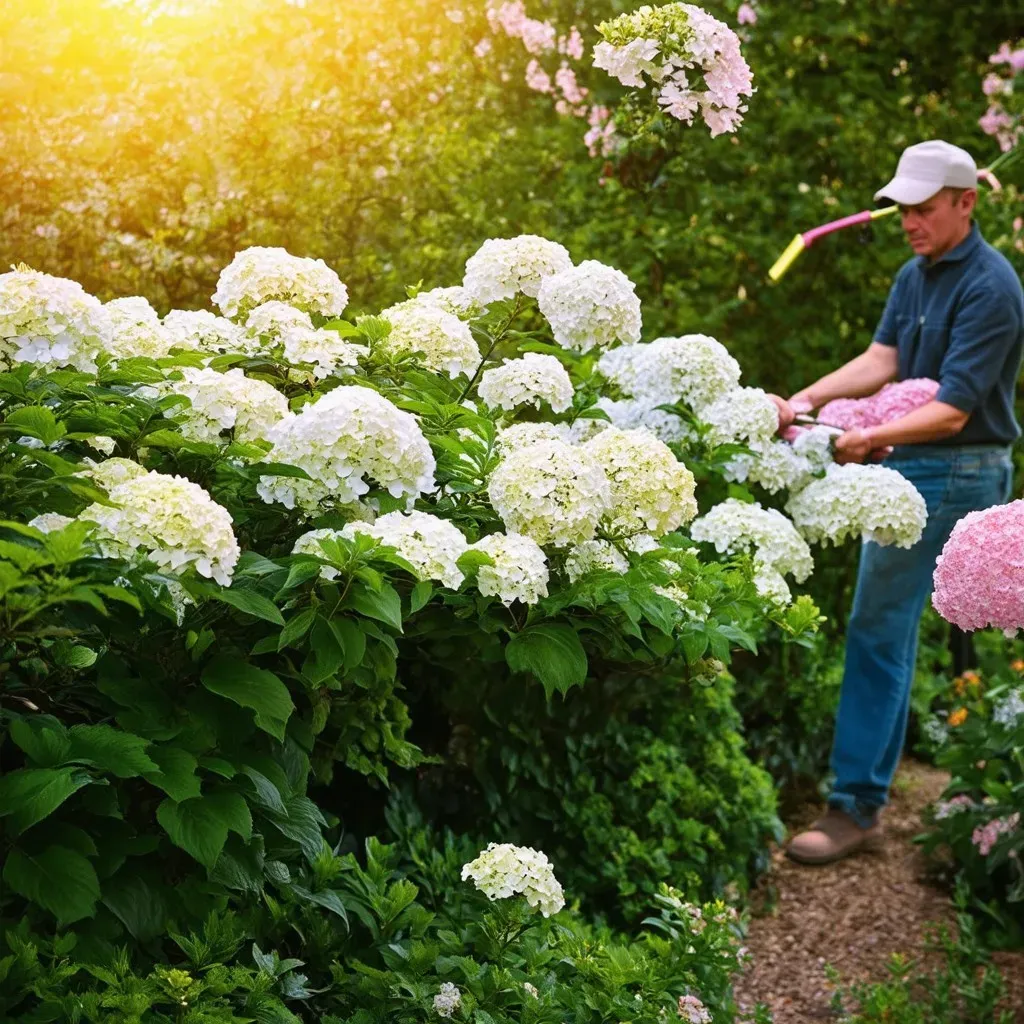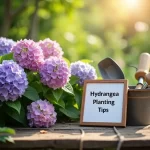Panicle hydrangea care involves understanding the needs of Hydrangea paniculata, a versatile and hardy shrub known for its enchanting cone-shaped blooms that can brighten up any garden.
Understanding Panicle Hydrangeas
Panicle hydrangeas, often referred to as peegee hydrangeas, are renowned for their adaptability, resilience, and ability to flourish in various climatic conditions. They bloom prolifically in summer and fall, producing large, cone-shaped flower clusters that transition from white or lime green to beautiful shades of pink as they age.
Popular Varieties of Panicle Hydrangeas
| Variety Name | Features | Height | Bloom Color |
|---|---|---|---|
| Limelight | Large blooms, blooms late in summer | 6-8 feet | White to pale green to pink |
| Little Bunny | Compact, sturdy branches | 3-4 feet | White, soft-pink as they age |
| Pinky Winky | Two-tone flowers | 5-7 feet | White to deep pink |
| Vanilla Strawberry | Cone-shaped blooms with sturdy stems | 6-7 feet | Creamy white to pinkish red |
| Quick Fire | Early bloomer with vibrant colors | 6-8 feet | White to rosy pink |

These varieties exemplify the diversity within panicle hydrangeas, making them appealing options for gardeners of all preferences.
Essential Care Guidelines for Panicle Hydrangeas
Sunlight Requirements
Panicle hydrangeas thrive in full sun to partial shade. Ideally, they should receive at least 6 hours of direct sunlight per day for optimal blooming. However, in hotter areas, some afternoon shade can prevent stress and encourage more vibrant blooms.
Soil Preferences
These hydrangeas prefer well-draining soil that retains moisture yet isn’t soggy. A pH level between 6.0 and 7.0 is ideal. You can enhance soil fertility by incorporating organic matter like compost or well-rotted manure before planting.
Watering Needs
Proper watering is crucial, especially during the first growing season as the roots establish. Here are some general guidelines:
- Weekly Watering: Ensure your plants receive about 1 inch of water weekly.
- Mulching: Apply a layer of mulch (3-4 inches) to retain soil moisture and regulate temperature.
- Signs of Need: Yellowing leaves can indicate a need for water, while wilting and browning edges may signify overwatering.

Fertilization Schedule
While panicle hydrangeas are relatively low maintenance, periodic fertilization helps promote healthy growth and vibrant blooms. Here’s what to follow:
- Early Spring: Use a balanced, slow-release fertilizer (10-10-10) when new growth begins.
- Mid-Summer Boost: AnOther light application during the bloom period can support ongoing flowering.
- Avoid Over-Fertilizing: Too much nitrogen can lead to lush foliage at the expense of blooms.
Pruning Panicle Hydrangeas
Pruning is essential to maintain the shape, health, and flowering capacity of panicle hydrangeas. Here are some recommendations based on timing and technique:
When and How to Prune
- Timing: Prune panicle hydrangeas in late winter to early spring before new growth starts (ideally between February and April).
-
Technique:
- Remove Dead or Damaged Branches: Cut back any dead or damaged parts first.
- Shape the Plant: Trim back about one-third of the previous year’s growth to promote new stems.
- Control Size: For larger varieties, you may also remove older stems at the base to keep the plant compact.
Common Pruning Mistakes to Avoid
- Pruning Too Late: Avoid pruning after the buds have begun to swell or bloom.
- Over-Pruning: Cutting back too much can lead to fewer blooms.

Pest and Disease Management
Panicle hydrangeas are generally resilient but can attract common garden pests like aphids, spider mites, and scale insects. Regular monitoring allows for early problem detection.
Common Issues and Solutions
| Issue | Symptoms | Treatment |
|---|---|---|
| Aphids | Sticky residue, curled leaves | Spray with insecticidal soap |
| Powdery Mildew | White, powdery fungus on leaves | Use fungicides or remove infected leaves |
| Leaf Spot | Dark spots on leaves | Ensure proper air circulation, apply fungicides |
Regular maintenance practices such as good air circulation, thoughtful watering, and prompt removal of debris can significantly reduce pest and disease issues.
FAQ about Panicle Hydrangea Care
Q: What is the best time to plant a panicle hydrangea?
A: Spring or fall is the best time to plant panicle hydrangeas when temperatures are milder.
Q: How do I propagate panicle hydrangeas?
A: They can be propagated through cuttings taken in late spring or early summer, or by division in spring or fall.
Q: Can panicle hydrangeas grow in containers?
A: Yes, panicle hydrangeas can thrive in containers as long as they provide adequate drainage and care.
Conclusion to Explore Further
For those looking to delve deeper into panicle hydrangea varieties, care, and cultivation techniques, visit the following trusted resource: Proven Winners.
With the right care and attention, your panicle hydrangeas can become a stunning focal point in your garden, showcasing their beautiful blooms season after season.


